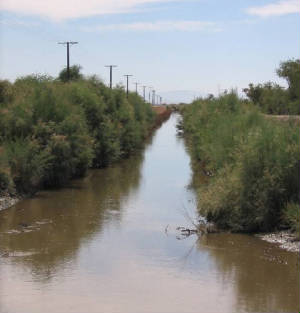|
|
|
Markets
Aquero Company selected a few target markets for work in the oilfield
and agricultural sectors. The first Aquero products were introduced and marketed by partner companies. These products
included agricultural additives for irrigation farming and water clarification chemicals and protocols for specific hard-to-treat,
produced waters in some oilfield under-served sectors.
Aquero's chemical materials potentially address many applications currently serviced
by acrylic and other vinyl polymers that collectively fill markets measured in billions of pounds of annual use.
As explained in a previous section, we are not targeting the commodity markets at this stage. However, there are companies
interested in our chemistry that are evaluating some of our experimental samples for applications ranging from personal
care products (cosmetics, conditioners, and lotions) to dust-control agents. The Aquero materials meet the targets for cost and performance in these markets. Manufacturing and distribution infrastructure is in place for some of the products. We are continuing the process of discovery, R&D, and commercial launch in several areas that are well-matched to our molecules and products. Some Observations about Strategy We researched biopolymers extensively in the 1980's and 1990's as water treatment chemicals, detergent additives, and superabsorbents. Our patents in the mid 1980's were the first to cover polyaspartates as water treatment chemicals and detergent additives. By the mid 1990's, we had succeeded in patenting a polyaspartate-based composition for superabsorbency. We produced the first kilogram of a polyaspartate superabsorbent and participated in "field" assessments of this material including controlled experiments with panels of babies and toddlers in prototype diapers. Our superabsorbent had been formulated to a range of specifications such as particle size, gel strength, gel volume and the like. It performed at parity or better across a range of product attributes as compared to commercial, acrylate superabsorbent. These projects were each supported by major multinational companies and conducted in collaboration with their chemist inventors and chemical engineers. However, the attempt to compete with globalized vinyl polymers, driven by the scale of the target markets even though the margins are low, was a mistake. As stated earlier, although these interesting and useful biopolymer compositions have been commercialized on a moderate scale, they have not been adopted in commodity markets. The main reason is economic, but infrastructure also has been critical. That is, the vinyl monomers are comparatively inexpensive, they are available from multiple sources around the world, the manufacturing processes of the polymeric materials are well-defined, and there is plenty of manufacturing capacity likewise distributed globally. Our biopolymer
materials did not offer any of these market advantages. It seems obvious now that a better strategy would have been to identify a market of entry that was better suited to the products. Our products need to be categorized like one or more of the following, assuming at minimum an acceptable standard of cost/performance for the market: ▪ A new product that
fills a need in a niche market with higher margins. ▪ A new product that solves a problem that has been poorly addressed. ▪ A new product that solves a problem that has not been addressed. ▪ A new product that can clearly compete better on cost/performance. ▪ A novel and better way to solve a problem using available chemistries. ▪ An environmentally acceptable product that meets a regulatory mandate. Once a product is launched successfully and some infrastructure is in place, then it is advisable to think
about the next level of markets. |
|||||||||||

